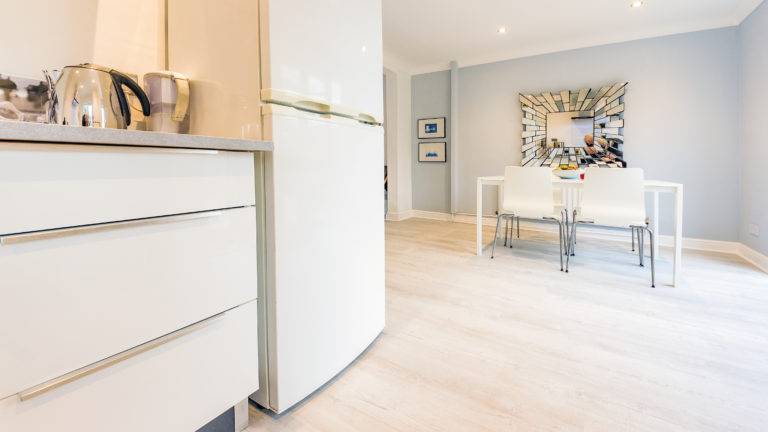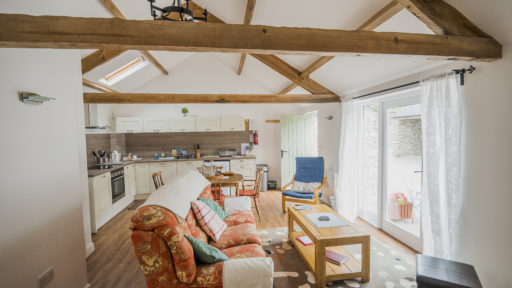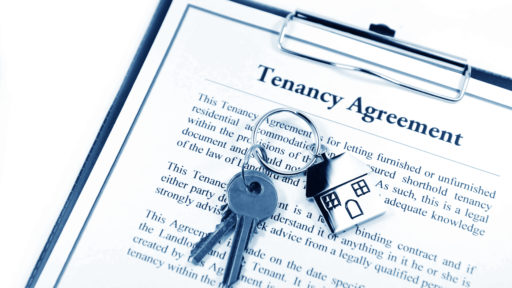Landlord responsibilities: guide to fixtures and fittings

Fixture or fitting? When you’re a landlord, it pays to know the difference between the two. While it’s simple to work out whether most items are a fixture or fitting, sometimes, when it comes to landlord and tenant responsibilities, things aren’t so simple. In this article, we look at the difference between the two, what landlords and tenants are responsible for, and the most appropriate insurance to ensure both are covered.
- What are fixtures and fittings?
- What fixtures and fittings are landlords responsible for?
- What are tenants’ fixtures and fittings?
- What happens if a fixture or fitting needs repairing?
- Avoiding repair disputes
- Who is responsible for insuring fixtures and fittings?
- Does contents insurance cover fixtures and fittings?
- FAQs
What are fixtures and fittings?
If you scan through almost any tenancy agreement (including the government’s model agreement for a shorthold tenancy), you’ll find clauses referring to ‘fixtures’ and ‘fittings’.
Fixtures and fittings are often considered a catch-all term for items attached to a property, but while the term ‘fittings’ has no legal definition, there is a broadly accepted distinction between the two. Fixtures are items that are permanently attached – or fixed – to the property, like a fitted kitchen, boiler, baths, sinks and toilets. Such items would almost always be included in the sale of a house.
Fittings can also be attached to the property but are generally more temporary and can include things like mirrors, curtains or blinds, and some shelving or cabinets hung on a wall.
That said, the difference between the two isn’t always clear-cut. Let’s take a quick look at how fixtures and fittings are identified.
How are fixtures and fittings identified?
Two legal tests are normally used to identify what is a fixture and what is a fitting.
The first test is the ‘degree of annexation’. The more firmly an object is fixed (or annexed) to a property, the more likely it is to be a fixture. Examples would be fitted kitchen units, built-in wardrobes, and tiled or hardwood floors.
The second legal test is ‘removability’. The easier it is to remove an object from a property, the more likely it is to be a fitting. Common fittings include freestanding shelving units or bookcases, curtains, and blinds.
These tests are important because you can’t always define a fitting or fixture based on what kind of item it is. For example, a cooker built into a fitted kitchen and connected to the gas supply would almost certainly be a fixture. A freestanding electric cooker would generally be considered a fitting.
What fixtures and fittings are landlords responsible for?
Your tenancy agreement should list what fixtures and fittings you are responsible for repairing. It should also set out the tenants’ duty to look after things and not to cause any damage beyond normal wear and tear.
Broadly, as a landlord, you will be responsible for anything that was in the property when the tenant moved in, such as:
- Permanent bathroom and kitchen fittings
- Boilers and other heating equipment like radiators, pipes, gas fires
- Supplied appliances like cookers and washing machines, if included in the tenancy agreement
- Drainage, water pipes, and gutters
- Electrical wiring and permanent light fittings
- Chimneys, flues, and ventilation
- Structural items like roofing material, broken floorboards and bannisters, faulty windows, and doors
What are tenants’ fixtures and fittings?
Normally, your tenants will only have fittings, and will only be responsible for items they have added to the property since moving in. These could include items like:
- Freestanding furniture such as sofas, beds, tables, and chairs
- Curtains, blinds, and rugs
- TVs and audio equipment
- Mirrors and pictures
- Domestic appliances (if not already provided)
- Other personal items
Normally a tenancy agreement will prevent a tenant from adding fixtures such as built-in shelving, walk-in wardrobes, or security alarm systems. If they wish to make these modifications, they should get your permission first.
What fixtures and fittings are tenants responsible for?
Tenants are responsible for their own fittings and belongings.
When it comes to responsibilities for landlords’ fixtures and fittings, the tenancy agreement should state that tenants are responsible for the reasonable care of the property. This means taking reasonable care of the landlord’s fixtures and fittings beyond normal wear and tear, but the tenant will not be responsible for the routine maintenance and repair of the landlord’s fixtures and fittings.
What should the tenant repair?
Tenants are expected to carry out minor repairs that most competent people could do themselves, such as changing light bulbs, unblocking sinks or baths or redecorating any walls they damage (such as by installing a flat-screen TV). Depending on the terms of the tenancy agreement, the tenant may also be responsible for keeping the garden in the same condition as when they moved in.
What happens if a fixture or fitting needs repairing?
Assuming the fixture or fitting belongs to you as the landlord; you’re required to carry out necessary repairs only once you have been notified of a problem by the tenant. You can arrange to visit the property for an inspection, giving a minimum of 24 hours’ notice or whatever time period is specified in the tenancy agreement according to your landlord right of entry. Sticking to the rules on notice periods is a legal requirement, and it’s also going to be appreciated if your tenants work from home.
You may sometimes be happy for the tenant to arrange the repair themselves, but you cannot require them to do so if you are legally responsible. It’s worth asking the tenant to get more than one estimate – after all, you’re paying the bill.
Where you either want to do the repair yourself or arrange for a tradesperson to carry it out, you must give the required notice period.
It’s worth remembering that when a tenant installs their own appliance, they are responsible for its safety and maintenance and for repairing any damage it may cause. For example, if they installed their own washing machine, they’d be responsible for water damage following a leak.
Can landlords refuse to carry out repairs?
Although landlords are responsible for repairing fixtures and fittings under Section 11 of the Landlord and Tenant Act 1985, there are some exceptions where either the tenant is responsible, or no action is required by law.
Specifically, these are:
- Damage caused by the tenant misusing equipment or deliberately or recklessly damaging it
- If there is destruction or damage by fire, flood or other inevitable accident, the landlord is not required to rebuild or reinstate the property
- Damage to anything the tenant has brought into the property and is entitled to remove.
If you fail to carry out repairs for which you are legally responsible, your tenant has several options. Firstly, they can contact the local council’s private renting team for help. If the problem potentially affects the tenant’s health or puts them at risk, the council can send an environmental health team to visit the property. If this happens, the council can serve you with one of four different types of notice:
- A hazard awareness notice. This explains the hazards and how to fix them.
- An improvement notice. This also gives start and finish dates for remedial work to take place.
- Emergency remedial action notice. The council can undertake the work and then charge the landlord.
- A prohibition order. This can prevent people from living in all or part of a building. It can also restrict the number of people living in it.
If you don’t undertake repairs, tenants can also take you to court. If they do this, the court can force you to undertake repairs or make an unsafe property fit to live in. The court can also award the tenant ‘housing disrepair’ compensation, along with the tenant’s legal costs and compensation for pain, suffering, and amenity.
Avoiding repair disputes
If a tenant asks you to repair fixtures and fittings you are responsible for; it’s wisest to arrange this as soon as possible.
It’s also important to undertake regular maintenance of fixtures and fittings. One of the best tools you have is regular property inspections. These will help you spot issues before they become serious problems and also alert you to any other problems with tenants. It also helps if you can refer to your inventory list for rental property inspections. If your inventory contains photographs, it can help you distinguish between damage and normal wear and tear.
Who is responsible for insuring fixtures and fittings?
A landlord’s responsibilities include insuring their own fixtures and fittings. You don’t need to insure anything brought into the property by tenants; the tenants can cover their fittings and belongings with tenants’ contents insurance.
Does contents insurance cover fixtures and fittings?
If you take out landlord contents insurance, it will cover you for most fittings you own, such as furniture, white goods, carpets, curtains and blinds.
Most fixtures, including fitted kitchens and bathroom suites, will normally be covered by your landlord buildings insurance. If you are a leaseholder, you won’t normally need to take out buildings insurance as this is the freeholder’s responsibility, so in this case, contents insurance would also cover any fixtures you’re responsible for.
What’s included in policies that cover fixtures and fittings?
At Alan Boswell Group, we can help tailor your contents and buildings insurance to cover your fixtures and fittings. By combining these two types of cover, you enjoy a wide range of benefits, including:
- Furniture and furnishings cover
- Accidental damage cover by tenants or visitors
- Lock replacement when keys are lost
- Buildings cover covering rebuild or repair after an insured event
- Loss of rent if the building becomes uninhabitable after an insured event
- Employers’ liability cover
- Public liability cover
If you have any questions about fixtures and fittings insurance, or to arrange cover, call 01603 216399 today and speak to a member of our specialist team.
FAQs
Are windows a fixture or fitting?
Windows are fixtures as they are affixed to a property and aren’t easily removable.
Is a TV a fixture or fitting?
A TV is a fitting as it can be easily removed. However, if a tenant installs a TV bracket, they should remove it at the end of the tenancy and make good the wall surface.
Is a bathroom mirror a fixture?
It depends. If it is permanently fixed in place and part of a bathroom suite, it will likely be a fixture. If it’s hung on hooks and brackets and can easily be removed, it’s a fitting.
Is a log burner a fixture or fitting?
It’s a fixture. It is affixed to the property and requires professional installation. It’s part of the property’s heating system and can’t be removed easily without causing damage.
Is a bed furniture or a fixture?
Beds are usually not affixed to a property, so this type of furniture is a fitting.
Is a curtain rod a fixture?
Yes, a curtain rod is generally considered to be a fixture.
Is a washing machine a fixture or fitting?
A washing machine is generally considered to be a fitting. Although they are connected to water and drainage systems, they can be easily removed and replaced.




